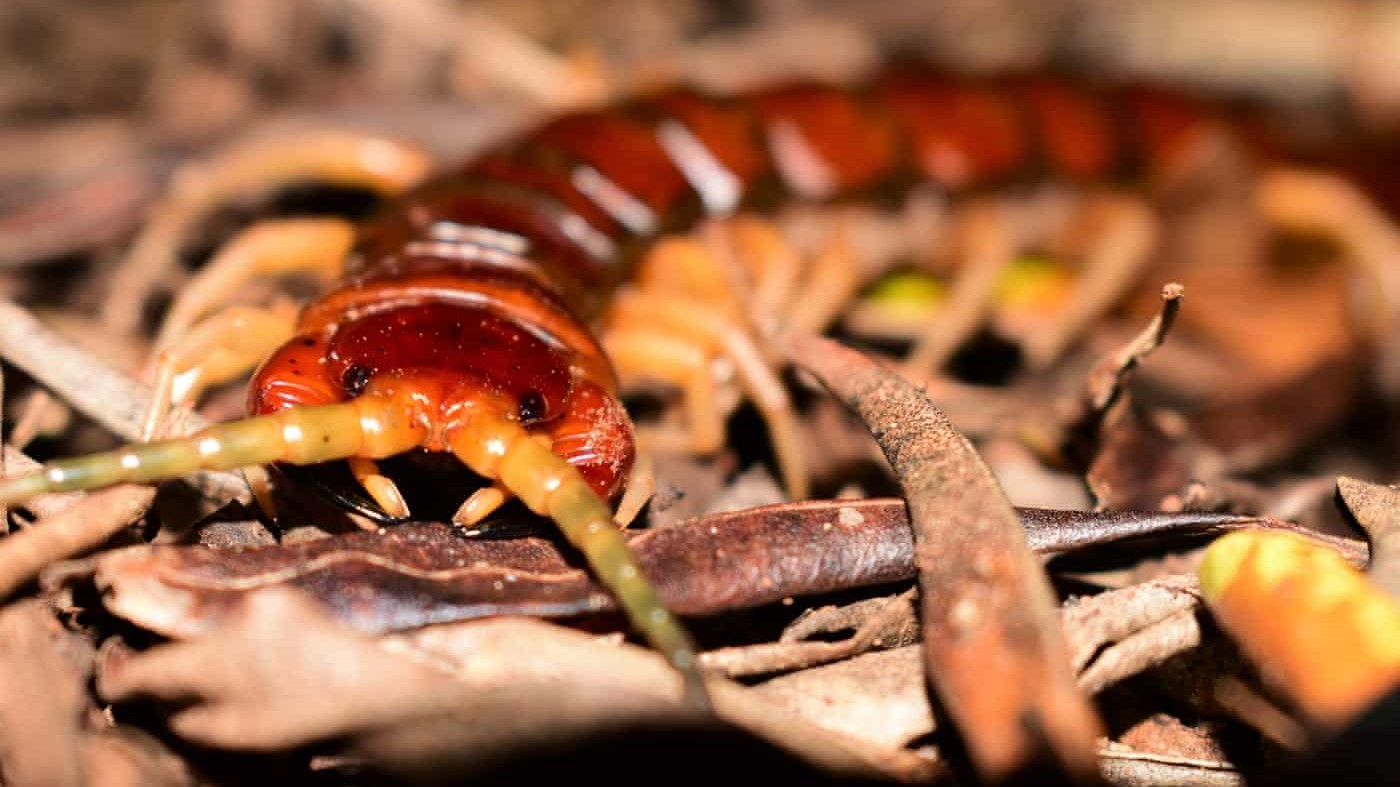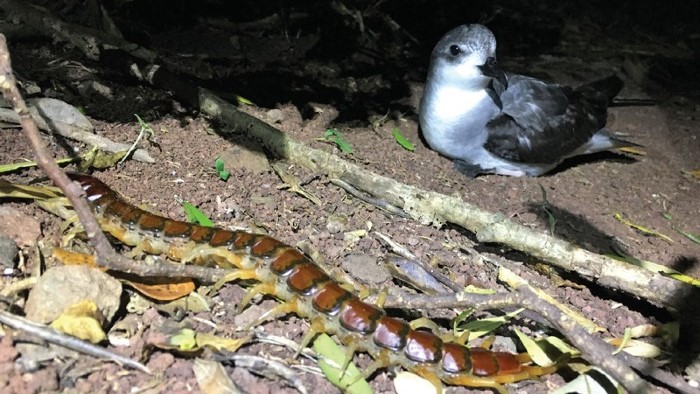These flesh-eating centipedes hunt and eat baby birds alive. Here's why.
This is the first time flesh-eating centipedes have been seen eating seabirds.

Giant, carnivorous centipedes on a South Pacific island can kill and eat up to 3,700 seabird chicks every year, a new study has revealed.
Phillip Island centipedes (Cormocephalus coynei) are ferocious beasties, growing up to nearly 1 foot (30 centimeters) long, clad in armored plates along their segments and equipped with a potent venom that they inject into unwitting victims through pincer-like "forcipules".
But researchers were most interested in these leggy monsters' gruesome diet. A new study shows that by hunting and consuming thousands of baby black-winged petrels (Pterodroma nigripennis) each year, the centipedes are the undisputed apex predators on Phillip Island, located 870 miles (1,400 kilometers) east of Australia, and are a vital part of its ecosystem.
Related: Top 10 deadliest animals (photos)

"In some sense, they've taken the place (or ecological niche) of predatory mammals, which are absent from the island," the researchers wrote in The Conversation.
As night falls across the remote island, the centipedes emerge from their lairs to stalk their victims. Using two sensitive antennas, they navigate their way across the forest floor that serves as their hunting ground. Black-winged petrels build burrows on the ground, so their chicks are prime targets. The centipedes strike as the chicks rest, scraping away flesh from the back of the baby birds' necks, injecting them with deadly poison, and eating them alive as paralysis sets in. From observing the centipedes as they hunt, and by analyzing tissue samples taken from their maws and the remains of their victims, the researchers estimated that the centipedes consume roughly 2,109 to 3,724 petrel chicks each year.
The study marks the first reported instance of centipedes preying upon seabirds, according to the researchers.
Sign up for the Live Science daily newsletter now
Get the world’s most fascinating discoveries delivered straight to your inbox.
And it's not just seabird chicks that the centipedes will hunt; they were also observed eating geckos, skinks, crickets and even scavenged fish.
The team spent 132 hours tracking and observing the centipedes as they hunted at night. After feeding their recordings into a model to predict the centipedes' diet, the researchers found that a chilling 48% of the apex predators' food intake was from vertebrate animals — with roughly 8% coming from seabird chicks alone.
Skin-crawling though it may be, the centipedes' voracious appetite is actually vital for the island's ecosystem, bringing nutrients from the sea (where the petrels hunt for their food) onto land, making the centipedes vital to the regrowth of vegetation on the island — which was widely destroyed when humans transformed the island into a penal colony in 1788, introducing pigs, goats and rabbits that ravaged its foliage.
By the early 20th century the pigs and goats were removed and, since the 1980s, conservation efforts by the nearby Norfolk Island National Park got rid of the remaining rabbits, enabling the seabird and centipede populations to rebound. The result? The island's ecology bounced back and is now flourishing.
"This could have important consequences for understanding trophic structures on islands and how vertebrate communities are shaped, perhaps especially so on islands, where arthropod gigantism is common and evolutionary processes have allowed invertebrates to occupy novel niches," the researchers wrote in the study, referring to trophic structures as the different levels across an ecosystem that an organism may fit into — for example carnivores or herbivores.
The researchers published their findings Aug. 3 in the journal The American Naturalist.
Originally published on Live Science.

Ben Turner is a U.K. based staff writer at Live Science. He covers physics and astronomy, among other topics like tech and climate change. He graduated from University College London with a degree in particle physics before training as a journalist. When he's not writing, Ben enjoys reading literature, playing the guitar and embarrassing himself with chess.









